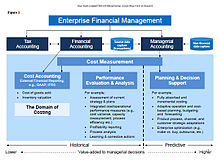Mutual Funds are pools of money collected from many investors for the purpose of investing in stocks, bonds, or other securities. Mutual funds are owned by a group of investors and managed by professionals. In other words, a mutual fund is a collection of securities owned by a group of investors and managed by a fund manager. An index fund is a type of mutual fund whose holdings match or track a particular market index, such as the S&P 500.
Sector funds are targeted strategy funds aimed at specific sectors of the economy, such as financial, technology, or healthcare. Sector funds can be extremely volatile since the stocks in a given sector tend to be highly correlated with each other. The portfolio manager is commonly given the freedom to switch the ratio of asset classes as needed to maintain the integrity of the fund’s stated strategy. Open-ended funds with 15 or fewer investors Types of Funds who have the ability to appoint or remove the operator of the fund referred to as “limited investor funds” are required to register with CIMA in accordance with the Mutual Funds Act. The Higher Education Endowment and Other Permanent Funds account for gifts and bequests that the donors have specified must remain intact. Each gift is governed by various restrictions on the investment and use of the income earned on investments.
International, global and emerging market funds
Read this PDF brochure to learn how mutual funds and ETFs work, what factors to consider before investing, and how to avoid common pitfalls. Bond funds face their own risks, even though they’re often safer than stock funds. There may be a chance that interest rates will rise, which can cause the value of the bonds to decline.
However, the different categories that qualify for the required 80% of the assets may be vague and wide-ranging. A fund can, therefore, manipulate prospective investors via its title. A fund that focuses narrowly on Congolese stocks, for example, could be sold with a far-ranging title like “International High-Tech Fund.” An international fund, or foreign fund, invests only in assets located outside an investor’s home country.
Hedge Funds:
This allows private funds to avoid registering as investment companies under the 1940 Act or registering their securities under the 1933 Act. As a result, private funds avoid many of the ongoing reporting and compliance obligations imposed on registered investment companies. Common types of private funds include hedge funds, private equity funds and managed futures funds (also known as “commodity pools”).
- A diversified portfolio has securities with different capitalizations and industries and bonds with varying maturities and issuers.
- These funds are distributed directly by an investment company, rather than through a secondary party.
- This includes the Budget Stabilization Account and accounts used to finance local projects, which are generally funded with bond proceeds and do not result in an asset owned by the state.
- The objective of this fund, known as an asset allocation fund, is to reduce the risk of exposure across asset classes.
This type of mutual fund focuses on getting returns coming into the fund primarily through interest. These mutual funds focus on a particular industry, such as technology, oil and gas, aviation or health care. For example, investors who want exposure to gains by companies like Google and Apple could put money in a technology fund. Ownership in different sector funds can help diversify your portfolio, so if one industry is hit hard (like the bursting of the dot-com stock bubble in 2000), those losses can be offset by gains in other sectors.
Aggressive Growth Funds (Small Cap)
The Local Construction and Loan Fund accounts for construction and loan programs for local public works projects. The Wildlife and Natural Resources Fund accounts for the protection and management, and remediation programs of the state’s wildlife, habitats, and natural resources, including forests, water, and parks. On the other hand, some people use these categories of funds management to collect money to spend on entertainment after retiring, so it could be safe and happy money for you to spend after all the hard work. Which is a known type of fund, particularly among parents, to ensure their childrenâs future and ability to join the college they target when the time comes, even without a scholarship. All investing is subject to risk, including the possible loss of the money you invest. Understanding how to put different types of investments to work for you is essential.

Mutual funds are actively managed by a professional who constantly monitors the fund’s portfolio. In addition, the manager can devote more time selecting investments than a retail investor would. In contrast to registered investment companies, which must always be organized within the United States, private funds are often organized in offshore jurisdictions for tax, regulatory and marketing reasons. Although it has a higher money risk, the type used by people and companies with solid financial statics has significant incomes and active return of investments to the fundamental money asset. Knowing complete information about your market exchange, investment bond, fixed asset, and overall money equity will help you relax and plan your primary income, outcome, and future funds possibility and investment.
Money Market Funds:
The facilities were financed with tax-exempt obligations that meet the requirements of Revenue Ruling and Revenue Procedure issued by the Internal Revenue Service. University of Washington Physicians (UWP) was established for the exclusive benefit of the University of Washington School of Medicine (UWSOM). UWP employs UWSOM faculty and bills and collects for their clinical https://accounting-services.net/services/ services as an agent for UWSOM. Washington State Patrol Retirement System Plan 1 Fund membership is limited to commissioned employees of the Washington State Patrol who joined by December 31, 2002. Washington State Patrol Retirement System Plan 2 Fund membership is limited to commissioned employees of the Washington State Patrol who joined on or after January 1, 2003.
